Planetary Annihilation is a real-time strategy game developed by many of the key individuals behind the popular Total Annihilation and Supreme Commander franchises. In many ways it is a spiritual successor to these titles, but takes the map-based strategic warfare concept found in those games and expands it to a planetary scale.
Planetary Warfare
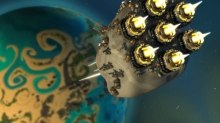 Maps, instead of consisting of large land and sea masses, actually consist of numerous planets, and even star systems.
Maps, instead of consisting of large land and sea masses, actually consist of numerous planets, and even star systems.
Although setting up a base of operations is similar to the systems found in its spiritual predecessors, whereby you recycle resources into structures and various units, players will eventually conduct warfare on a planetary scale, conquering whole planets and star systems that can consist of dozens, even hundreds of worlds.
Planetary warfare will all be handled seamlessly thanks to the ability to zoom in and out at will and the planets themselves can also be destroyed by large asteroids.
Commander System
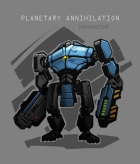 Much like in Total Annihilation, a player's commander is a powerful unit on the battlefield, capable of speeding up structure and unit development, and being able to take on enemy units in combat thanks to powerful weaponry and strong defenses.
Much like in Total Annihilation, a player's commander is a powerful unit on the battlefield, capable of speeding up structure and unit development, and being able to take on enemy units in combat thanks to powerful weaponry and strong defenses.
The drawback is that your commander genuinely is the most important unit on the battlefield - lose your commander and you lose the game - making him a key target for enemies.
Production
As in Total Annihilation, structures and units are built using resources harvested from the planet, be it via solar power, tidal power, wind power, and various other methods. The immediate goal in each game is to set up a stable and effective base of operations, which means ensuring a steady stream of resources. If demand outstrips supply, however, then your production will be crippled, making economic management an essential aspect of the gameplay.
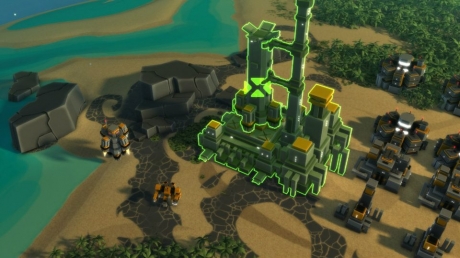
Once you have a stable economy in place, the next goal will typically be to create a large army, capable of defending your base and destroying the enemy. The emphasis here is typically on macro-management (i.e. unit production), as opposed to micro-management (unit control).
Structures & Units
Planetary Annihilation will feature a wide range of structures and units, from defensive to offensive, land, air and sea-based, resource collection and resource use, and so on. Structures can be further divided into regular buildings and more expensive, Advanced buildings which require longer to build and use up more resources, but which also produce more powerful units.
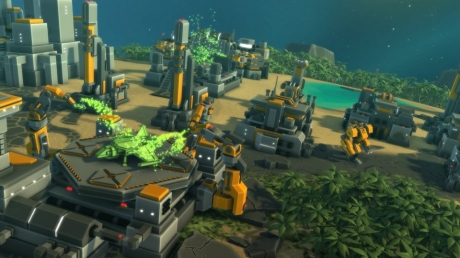
Galactic Control
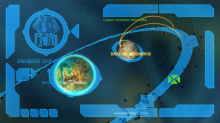 In order to allow for the best control possible on a galactic scale, Planetary Annihilation will feature a unique order queuing interface, allowing players to control enormous armies across several worlds, whilst at the same time giving them a strategic view of the huge battlefield, allowing players to zoom in and out of specific war zones with ease, and even use multiple interfaces to keep an eye on more than one battle at a time.
In order to allow for the best control possible on a galactic scale, Planetary Annihilation will feature a unique order queuing interface, allowing players to control enormous armies across several worlds, whilst at the same time giving them a strategic view of the huge battlefield, allowing players to zoom in and out of specific war zones with ease, and even use multiple interfaces to keep an eye on more than one battle at a time.
Multiplayer
Although there was a rudimentary multiplayer system found in Total Annihilation, Planetary Annihilation is set to have destruction on epic in scope, allowing for anything from small two player low unit cap skirmishes to massive, 40 player conflicts.
It is expected that players will also be able to form clans, and that there will be a form of ranked matchmaking to help ensure players compete against those of similar ability.
Modding
The game is being built with the mod community in mind. The community will be able to add not just additional structures, units and planets to the game, but even their own races and game modes.
The game is expected to ship with a map editor.
ChronoCam
ChronoCam is the name of the replay system in Planetary Annihilation.This replay system allows spectators and players alike to look back through a game at any point and then view any part of the battlefield they like.
